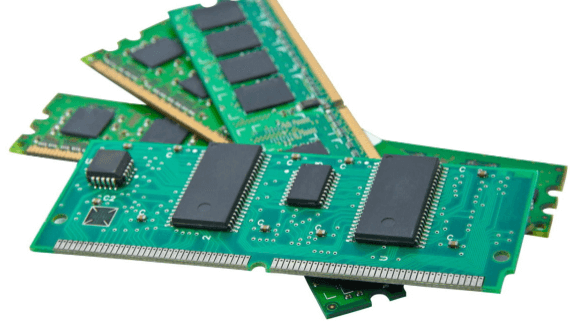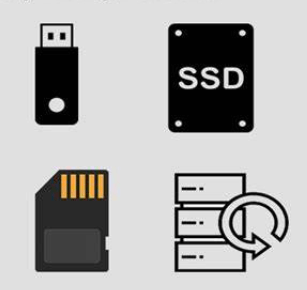Central Processing Unit (CPU)A Central Processing Unit is also called a processor, central processor, or microprocessor. It carries out all the important functions of a computer. It receives instructions from both the hardware and active software and produces output accordingly. It then performs calculations, manipulates data, and produces output based on those instructions. It stores all important programs like operating systems that manage the computer's resources and allows you to interact with it and application software that you use to perform tasks like word processing, web browsing, and gaming. Your computer couldn't execute these essential programs without the CPU. CPU also helps Input and output devices to communicate with each other. The CPU translates these inputs when you click, move the mouse, or click on a key on the keyboard, and it works with the relevant software program to produce the intended result. The CPU ensures that the input and output devices communicate without any troubles, whether it means printing a paper, playing music through the audio system, or showing text on the display screen. Owing to these features of CPU, it is often referred to as the brain of the computer. CPU is installed or inserted into a CPU socket located on the motherboard. Furthermore, it is provided with a heat sink to absorb and dissipate heat to keep the CPU cool and functioning smoothly. Central Processing Unit's - History and EvolutionComputers have become a part of our everyday lives, but the first computer was developed in 1946 at the University of Pennsylvania!
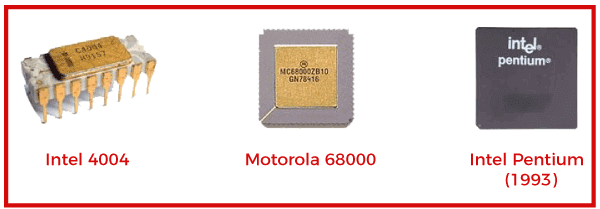
1971 - Intel 4004
1972 - Intel 8008
1974 - Intel 8080
1974 - Motorola 6800
1977 - Intel 8085The processor was also used as a microcontroller, operating on a +5V supply, unlike the other processors formed so far.
1978 - Intel 8086
1979 - Intel 8088
1987 - SPARC
1991 - Am386
1993 - Pentium Processor
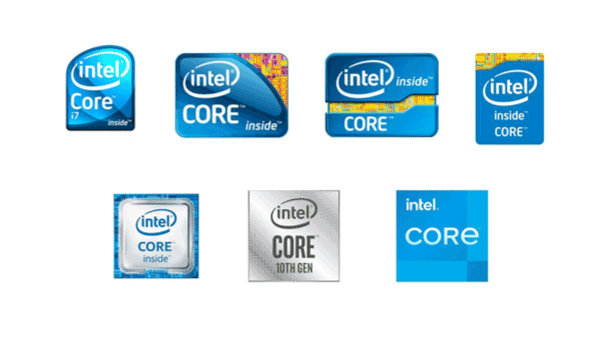
1995 - Pentium Pro
1997- Pentium II
1999-Pentium III
1999 - Athlon
2000-Pentium IV
2003-Pentium -M
2006-Core 2
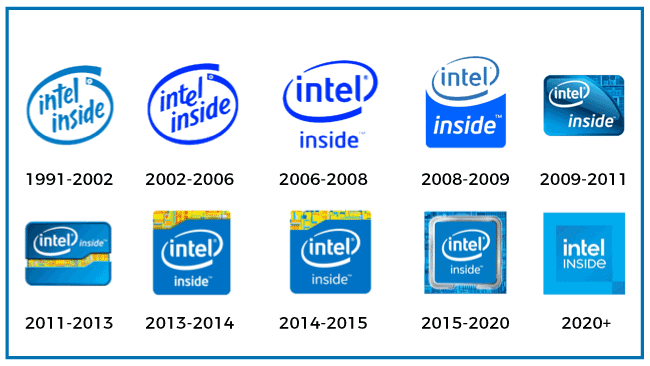
Latest Technology- CPUSince the launch of the 4004 microprocessor, the technology has advanced significantly. A smaller chip, faster clocks, and larger caches have all resulted in a smaller chip and faster clocks. Products based on Intel's microarchitecture were introduced in 2011. It has been able to produce dies with a 32-nanometer thickness. Included is Intel Quick sync, which is a hardware-based video encoding and decoding solution from Intel. Interconnecting the different parts of the processor is also made easier with an improved 256-bit/cycle ring bus connect.

Ivy Bridge
Latest - Fifth Generation CPU or Central Processing Units
Components of CPU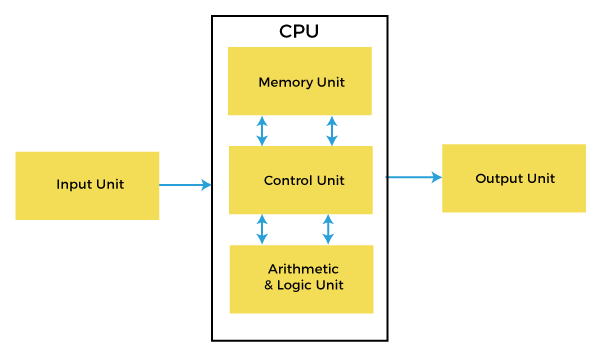
Generally, a CPU has three components:
Control Unit:The Control Unit (CU) is a vital part of the Central Processing Unit (CPU) and is accountable for the overall performance of a computer system. It is the circuitry in the control unit, which makes use of electrical signals to instruct the computer system for executing already stored instructions. It takes instructions from memory and then decodes and executes these instructions. So, it controls and coordinates the functioning of all parts of the computer. 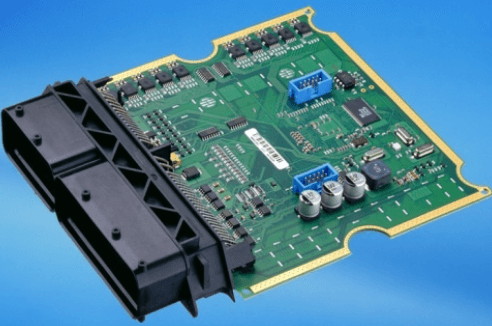
The Control Unit's main task is to maintain and regulate the flow of information across the processor. It serves as a traffic controller, ensuring that information and instructions are efficiently transferred among the various elements of the computer system. It manages the order in which instructions are executed and synchronizes the activities of various units within the CPU. It does not take part in processing and storing data. Instead, it serves as an overseer, coordinating the actions of other CPU parts to guarantee that instructions are carried out accurately and in the right order. The Control Unit achieves coordination within the CPU through a series of steps: 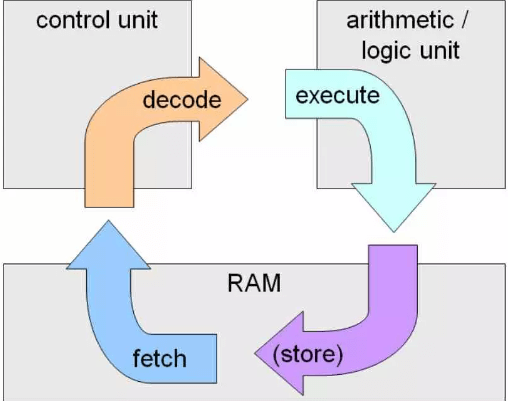
This fetch-decode-execute cycle is repeated for each instruction in the program, allowing the Control Unit to coordinate the sequential execution of instructions and ensure that the computer system performs the required tasks. The Control Unit ensures the correct information flow and guides the CPU's actions during this process. It eventually aids in the general operation of the computer system by allowing the CPU to carry out the required operations and computations through the fetching, decoding, and execution of instructions. ALU:It is the arithmetic logic unit, which carries out arithmetic and logical operations. Included in the list of arithmetic operations are addition, subtraction, multiplication, division, and comparisons. Data selection, comparison, and merging are the primary logical operations. More than one ALU may be present in a CPU. ALUs can also be used to keep track of timers that assist in running the computer. 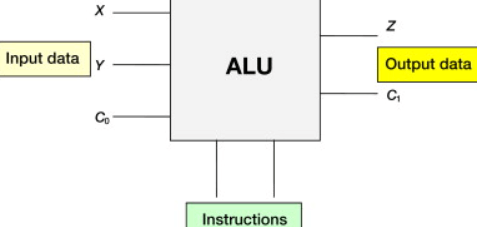
The ALU consists of two main subsections: the Arithmetic Section and the Logic Section.
The ALU's arithmetic and logical functions are crucial for the execution of instructions within the CPU. The ALU is responsible for carrying out the necessary arithmetic or logical operation specified by the instruction when retrieved and decoded by the Control Unit. For instance, the Arithmetic Section of the ALU will perform the addition operation and output the result if an instruction calls for adding two integers. Sometimes, a CPU may contain multiple ALUs to enhance its processing capabilities. Multiple ALUs can work simultaneously, allowing for parallel execution of operations and speeding up computation tasks. This is especially beneficial in CPUs with multiple cores or processors designed for high-performance computing. Memory or Storage Unit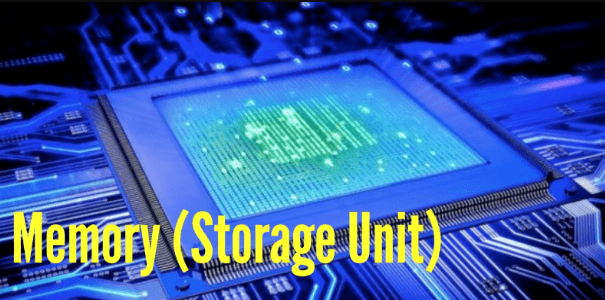
A computer system's memory or storage unit maintains instructions, data, and intermediate outcomes. It acts as a database that other computer components may access and save data in as needed. This device has numerous names because of its numerous functions, including internal storage unit, main memory, primary storage, or Random-access reminiscence (RAM). The memory unit's capability directly affects the computer's speed, power, and normal performance. A memory unit with a larger ability allows for storing more data and instructions, resulting in an improved machine capacity to handle complicated tasks efficiently. A computer system commonly has two types of memory: primary and secondary.
Some functions of the Memory unit
What is CPU Clock Speed?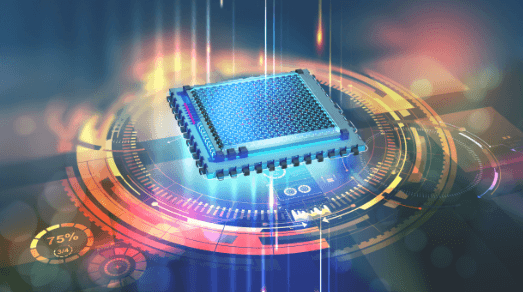
The clock speed of a processor, often known as the CPU clock rate, is an important component. The clock speed of a CPU or a processor refers to the number of instructions it can process in a second. It is measured in gigahertz. For example, a CPU with a clock speed of 4.0 GHz means it can process 4 billion instructions in a second. The number of instructions a CPU can execute in a specific time is determined by the CPU's clock speed. Each instruction represents a fundamental CPU activity, such as transferring data or doing mathematical calculations. The clock speed determines how quickly these instructions are executed. A higher clock speed allows the CPU to process more instructions per second, enhancing overall performance. Consider an example with a factory production line to understand better how clock speed affects CPU performance. The clock speed represents the speed at which the conveyor belt moves, bringing workpieces to different stations. The faster the conveyor belt moves; the more workpieces can be processed in a given time. Note: The entire performance of a CPU is not determined by the clock speed alone. The processor's architecture and design are also quite important. The effectiveness of different CPU architectures in carrying out instructions can vary. Therefore, CPUs with lower clock rates but superior architecture may perform better than CPUs with greater clock speeds but inefficient designs.Modern CPUs also frequently use techniques like multi-core architectures and instruction pipelining to boost speed. To increase processing power overall, multi-core CPUs include numerous independent processing units (cores) that may carry out instructions concurrently. The CPU may execute many instructions simultaneously using instruction pipelining, significantly enhancing efficiency. Because of advances in semiconductor technology, CPU clock rates have been rising continuously over time. Early CPUs operated at clock speeds measured in megahertz (MHz), but with technological progress, GHz speeds became the norm. Some high-end CPUs even surpassed the 5 GHz mark. Types of CPU:CPUs are mostly manufactured by Intel and AMD, each of which manufactures its own types of CPUs. In modern times, there are lots of CPU types in the market. Some of the basic types of CPUs are described below:
Single Core CPU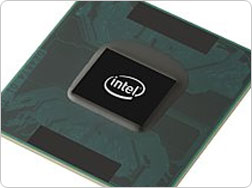
Single Core is the oldest type of computer CPU, which was used in the 1970s. It has only one core to process different operations. It can start only one operation at a time; the CPU switches back and forth between different sets of data streams when more than one program runs. So, it is not suitable for multitasking as the performance will be reduced if more than one application runs. The performance of these CPUs is mainly dependent on the clock speed. It is still used in various devices, such as smartphones. But as technology developed, multi-core CPUs proliferated and now provide better multitasking skills. These CPUs can execute several instructions simultaneously due to their numerous processing cores. Single-core CPUs are less popular in desktop and laptop computers, although they are still used in embedded systems and mobile phones. Smartphones often use single-core or dual-core CPUs that are particularly made for power efficiency to balance performance and battery life. Dual Core CPU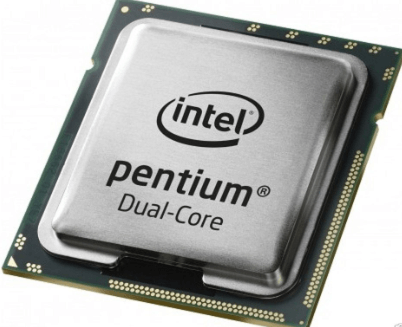
As the name suggests, Dual Core CPU contains two cores in a single Integrated Circuit (IC). Although each core has its own controller and cache, they are linked together to work as a single unit and thus can perform faster than the single-core processors and can handle multitasking more efficiently than Single Core processors. A dual-core CPU's two cores enable the execution of many tasks in parallel. Each core can independently execute instructions, enabling parallel processing. This capability significantly improves multitasking performance compared to single-core processors. With dual-core CPUs, users can run multiple applications simultaneously without experiencing significant performance slowdowns. Dual-core CPUs offer benefits beyond multitasking. They can also enhance performance for single-threaded applications. Since each core can handle instructions independently, tasks that cannot be parallelized can still benefit from the dual-core architecture. One core can focus on running the main application, while the other handles background processes or system tasks. This division of work ensures a smoother user experience and improves overall system responsiveness. Quad Core CPU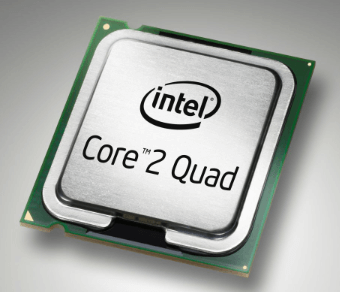
This type of CPU comes with two dual-core processors in one integrated circuit (IC) or chip. So, a quad-core processor is a chip that contains four independent units called cores. These cores read and execute instructions of CPU. The cores can run multiple instructions simultaneously, thereby increases the overall speed for programs that are compatible with parallel processing. Quad Core CPU uses a technology that allows four independent processing units (cores) to run in parallel on a single chip. Thus, by integrating multiple cores in a single CPU, higher performance can be generated without boosting the clock speed. However, the performance increases only when the computer's software supports multiprocessing. The software which supports multiprocessing divides the processing load between multiple processors instead of using one processor at a time. Thanks to Quad-core processors' ability to divide the processing burden among several cores, multiple processors can operate simultaneously instead of one at a time. Certain software supports this multiprocessing capacity, which improves productivity and speeds up processing times, especially for jobs that can be broken down into smaller subtasks and carried out concurrently. Quad-core CPUs, in particular, provide advantages in terms of increased efficiency and quicker processing for multitasking and computationally heavy jobs. With four cores, the CPU can divide the workload more equally, enabling quicker reaction times and more fluid multitasking. In jobs like video editing, 3D graphics, and gaming, where simultaneous execution of numerous tasks is essential, quad-core CPUs excel in parallel processing. Hexa-Core CPUs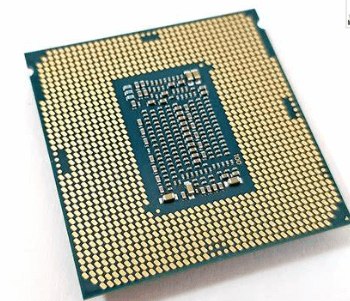
Hexa-core CPUs are computer processors that include six separate cores on a single integrated circuit (IC) or chip. Each core functions as a separate processing unit that can perform computations and commands. With six cores, processing power may be boosted, and performance can be enhanced. Regarding multitasking and managing resource-intensive tasks, Hexa-core CPUs provide substantial benefits. The CPU can perform numerous tasks simultaneously with six cores by distributing the burden among them for more effective processing. Users may operate many programs simultaneously without noticeably encountering performance slowdowns or delays, such as web browsers, video editing programs, and gaming programs. Hexa-core CPUs also excel in applications that demand significant computational power, such as video editing, 3D rendering, scientific simulations, and virtualization. These tasks can be distributed across multiple cores, resulting in faster processing and reduced waiting times. Octa-Core CPUs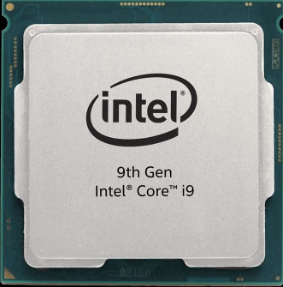
Octa-core CPUs are computer processors with eight separate cores on a single integrated circuit (IC) or chip. Each core performs as a separate processing unit that can perform calculations and commands. An octa-core CPU's eight cores considerably boost processing power and overall performance. Octa-core CPUs excel at performing demanding workloads and have impressive multitasking capabilities. With eight cores, the CPU can effectively manage multiple simultaneous tasks. The workload is distributed across the cores, allowing for efficient processing and faster completion of tasks. This means users can run numerous applications simultaneously without experiencing significant performance slowdowns or system lag. The key advantage of octa-core CPUs is their ability to execute instructions in parallel. Each core can independently work on different tasks, allowing for concurrent processing. This parallel processing capacity enhances system performance overall and speeds up operations. It is especially beneficial for undertakings that may be divided into smaller tasks and finished simultaneously. Octa-core CPUs are best suited for computationally intensive software that requires many resources. High-definition video editing, 3D rendering, intricate scientific simulations, and virtualization are among the examples. These workloads may be effectively divided across several cores, resulting in quicker processing and shorter wait times. Multi-Core CPUsMulti-core CPUs, also known as multi-core processors, are kinds of computer processors that combine several independent cores onto a single chip or integrated circuit. Multi-core CPUs use two or extra cores that work collectively to execute instructions and do computations, in contrast to single-core processors, which rely upon a single core to complete all activities. The primary advantage of multi-core CPUs is their capability to deal with numerous tasks simultaneously, improving overall performance and efficiency. The CPU's cores perform as separate processing units that can operate independently. Due to the CPU's ability to distribute work across its cores through parallel processing, jobs may be completed more quickly and concurrently. Users may run numerous programs simultaneously on multi-core CPUs without suffering severe slowdowns or performance bottlenecks. For instance, each job may be given to a different core for effective processing, allowing you to browse the web, stream movies, and work on paper simultaneously. This multitasking feature makes the system more responsive overall and provides a more convenient user experience. Multi-core CPUs excel at performing computationally demanding activities in addition to multitasking. These processors can handle complicated activities like video editing, 3D rendering, scientific simulations, and gaming more effectively by distributing the burden among numerous cores. The ability to distribute the workload across cores results in faster processing times and reduced waiting periods.
Next TopicHardware
|
 For Videos Join Our Youtube Channel: Join Now
For Videos Join Our Youtube Channel: Join Now
Feedback
- Send your Feedback to [email protected]
Help Others, Please Share





